I'm not sure if this is the same as cultural sustainability, but definitely connected. What is it about culture that makes it sustainable? Or, specifically, what is it about OUR culture that makes in NOT sustainable? I think there are many answers to this and many of them obvious, but some not so much. The fact that it is based on consumption is a big part of it. And the media plays a big role in the development of this culture. I think media literacy will be an important component of a curriculum that helps students investigate their culture's sustainability. There are some great sources out there for this, and very engaging for students. Some are in Rethinking Globalization, which is an excellent resource for this project in general. There's also the the Adbusters Media Foundation and their work with 'culture jamming.' They're a little artsy and radical, but very exciting and important. I believe they also organized the Occupy movement, but I'm not sure about that. Speaking of Occupy, I think another important contributor to the unsustainability of our culture is the rampant inequality and injustice. I just read about a great curriculum coming out in the fall called Perspectives for a Diverse America. It's on page 21 of the current issue of Teaching Tolerance. It's based on teaching social justice, and has many excellent components we should look at for this project. For example, close ties to the Common Core, which make it very practical. There's also going to be a lot of flexibility, with many resources available to pick and choose from based on the teacher's specific goals and classes. They are building an online anthology, which will be a "goldmine of rich text".. We should also look at the standards they're creating and the 'integrated learning plan' which spans from basic literacy skills to critical dialogue and action/advocacy--something we need students to develop if we want our country/culture to make the shift toward sustainability..
As an Cultural Anthropology fan I like to think about how other cultures think and what makes them more sustainable. One of my favorite Anthropologists is Wade Davis, and I think his books could be a valuable part of an 'anthology' we create. They span very nicely from exciting VooDoo zombie action to cultural wisdom and ecological crises--and they're all non-fiction, which is Common Core friendly.. His books are pushing the boundaries of 'creative non-fiction' because his experiences are so submersed in other cultures they are difficult to imagine and believe. This could be a great way to hold a mirror to our culture and its lack of spiritual substance, connection to the earth, etc.
We discussed the power of artifacts to draw student interest, and this recent article in the UNH Magazine (Winter 2013) shows a powerful and sustainable model. Through a combination of narrative and research-driven facts, the article outlines an exhibit that is much more than a static member of the "moth ball fleet." The dresses were originally collected to be used as hands-on models for student seamstresses. Today, they are a study in late 1800's society and enough has been documented about items in the collection that we can start to piece together some of the individual personality of the dress wearers. The article is posted as a .pdf in our Resources section.
There are so many directions this article excites thought - the first that comes to mind is the idea of having students bring one article of clothing that represents something about themselves, their experiences, their hopes and use it as a springboard into discussion and connections with character analysis (literature) or development (composition). Social Studies connections abound here, as well. What do durable styles and trends say about a people? How does clothing so carefully match economic and social status? What do the personal artifacts left behind say about what a culture valued - and which of your valued artifacts will exist in a hundred years, from which others may try to figure you out?
This article points out something bigger than the grabber-level attention-getting school scenario. The work involved is bigger than the exhibit; it's bigger than the students who get involved one way or another each term. By collecting, studying, and making these artifacts accessible to students of all walks, the leaders mentioned in Harrigan's article are part of a sustainable effort. There is material, interest, momentum, and significance to their work. Keeping the material relevant to today's scholars helps keep the "curriculum" related to the "clothes" lifeted up to a sustainable level. When we consider sustainable curriculum and sustainable culture, this is the sort of durability that makes a powerful model
Amanda Eason,
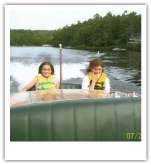 1930 Chris Craft The idea of cultural sustainability has a powerful draw to me as an "English teacher." Each course I teach - whether it's literature, composition, fiction, study strategies or skills level reading, the question emerges from students: Why does this matter? Why should we care? Why can't we just read and write what we want? Especially at the community college level, where folks are very much driven by their chosen career path, students question the validity of the "English" curriculum. They have every right to question this! The traditional response, of course, is that their college experience is building them up to be a powerful professional with excellent communication skills, who is well-read and capable of discussing in writing or verbally topics necessary for their field; adequate citizenship gets thrown into the conversation, as well. What does this mean to the 17-30 year old student in a mandated course? I'm not sure. That's why this idea of cultural sustainability means so much.
Engendering the interest in, and ability to document the world around us is one surface-level feature of sustainable culture. Earlier societies accomplished this through bards, later through the Bible and other written resources, still later through multi-media avenues. Currently, however, we have to wonder how our world of the living generations will be documented. We've learned a bit of mistrust for history texts as they are, and the internet is not necessarily the most durable option. Some students have the feeling that Facebook will save their stories, that future generations will glean their history from the pages of the internet, and that "my story doesn't matter anyway!" If a group doesn't have hope that others are interested in their culture, then they are less likely to be interested in that of others. Communication, and growth fail in this case. So, what do we do, and where do we go from here?
To begin the process of finding out what has been done so far with cultural sustainability, I grabbed a few quick internet sources and posted them in our Resources section under a new heading, Cultural Sustainability. As I continue to build the professional development presentation, "Poetry of Ecology and Farming" I intend to bring the idea of cultural sustainability into the foreground - what a better answer to "Why?" for a topic like this - or for other topics that include keeping past stories alive in durable, sustainable ways? :)
For example, on another note, another topic - how else to get young folks interested in history than making it alive and loud? That may work for a small few, but at the same time - the culture of those who originally built and enjoyed these boats is almost forgotten. Bit by bit, each year more stories are lost.
Amanda Eason
On our Resources page, I posted a Vimeo video about farming in New York city. It's in the Multimedia section, all the way at the bottom of the list. It looks like something that may be relatively accessible for our students - just a thought - and I'm wondering if I did the video upload correctly... any thoughts...? :)
Amanda Eason
An Idea from Public Insight Network
I got an email from American Public Media's Public Insight Network this week that I am trying as an Extra Credit Project with my English Composition class. The question revolves around the Mars One project, which is about to start astronaut selection. The question is "Would you stay or would you go?" I posted the email with the links to the survey and related material on the class BlackBoard site, and also went over the materials and handed them out in hardcopy (I know, I know, not nice to the environment, but some of these students barely have the ability to post their assignments on BlackBoard, let alone branch out into the vast possibilities of the Great Cloud). Their assignment for me is to answer the question and the follow-up, why or why not. I'm thinking of following up in class on this with the question: What would you need to sustain you on Mars if you chose to go and were chosen? I think this might make a good stepping off point for a unit on sustainability.
What do you folks think? Any additional ideas are welcome.
Rita Mac Auslan
wear what we want--without have to think about where it came from?
I just read this quote in the short article "Downstream from your jeans" by Corinne Platt-Rikkers in a Patagonia catalogue: "Conventionally grown cotton uses more insecticides than any other crop. And humans use more cotton than any other fiber."
Like food, our clothes connect us to this great network, and they are something young people put some thought into already--maybe even a lot of thought..
I love to connect them to the garment industry, and the people their age who are working in factories all over the world. This is a very engaging and enlightening experience for them.. but I never thought to go all the way back to the cotton.
The other thing they are [maybe too] connected to is their phones. These are becoming the center of their world in many ways. In my World History class we're studying industrialism, which is not only too easy to link to sustainability, but I would say at this point it should be an essential theme of the unit. We've been looking at news video clips from last year when Apple and its factories [Foxconn] were being scrutinized for the increasing suicide rates. You could hear a pin drop in the classroom of hyper 14 year olds.. Foxconn's reactive solution was/is to put nets around the bases of their buildings to catch the jumpers. Their proactive solution was to have workers sign a contract pledging not to commit suicide (this is real). The suggested causes included 'pressure to produce,' as the factories could not keep up with demand for these sexy new devices.. so that we, these students, could have them, when they want them, at the price they can pay.. If a factory can't sustain life, what needs to change? What is the really proactive solution? These are the questions we'll be looking at. And the answers aren't in China--they're here. They don't just involve factory conditions, they involve values. And not only should these kids be thinking about those values that would help a global economy become more sustainable, but about what active citizens and consumers need to do to get there.
Nostalgia for the Light proved to be an interesting addition to my pre-Spring Break "sales pitch" for the required research paper in my English Composition course. We watched the movie together, with the sound low enough that I was able to do a running commentary where needed. Talking them through ideas seems to help keep them focused, and imparts some value on the viewing, as well. I pre-loaded the viewing with a discussion of essential questions How do we appreciate what we consume? and How do we appreciate what consumes us? which we will tie right into topic selection for the research paper after Spring Break. Introducting the movie also meant letting them know I was aware that some folks might lable this a "sleeper" but that I felt the ideas are important enough to share. They bought into the idea pretty well for first year college students :) The PBS Viewing Guide provided some nice quotes with pertinent questions, of which I selected 5 to be the focus of team work after viewing. The movie definitely got them thinking, and I can only hope their writing about it is as good as their discussions after viewing! ....we'll share that later...
Amanda Eason
What a great idea, Amanda! My English Composition class has already chosen their research paper topics, but this is a great idea for the Fall sustainability unit!
Thanks!
Rita Mac Auslan March 18th - a few reflections to share with you So, after reviewing some of the responses, I grabbed three to share with you-all. It's SO interesting to see how students react to and reflect upon something like Nostalgia for the Light. Some take it at the literal level - pushing to make connections. Others jump right into the abstract, lighting fires as they go :) As you look at these, please do keep in mind that there are NOT drafted pieces - and are reflections of first-year community college students based on questions presented to them in class. Click here for Student A responseClick here for Student B responseClick here for Student C response
Hi all! Just testing the blog! I will write more when I have a minute! Currently buried in a stack of grading! I felt very energized by the weekend, though,and excited about building the 3-week unit. Great to meet everyone!
Colleen Sasso
Hi Colleen!
I'm on for the first time - thank goodness for the snow day! How does one figure out who posted if he/she doesn't put his/her name on the post like you did?
I will need more help with this, I can tell. If anyone would like to volunteer to help me figure out what I can do besides commend on blogs (which is enough like Facebook that I figured it out), I'd be most grateful.
Rita Mac Auslan
...Or, Rain is a Good Thing
In the beginning of April, I am scheduled to present at the New England League of Middle Schools’ Annual Conference. This will be my second year doing so, and the proposed presentation this year is along a quite familiar theme: The Poetry of Ecology and Farming. Last year, I worked around the title, Art and Poetry of Farming, but that seemed too… gimmicky to continue and while there is a valid concern over what some call a fad, a trend, and an alternative lifestyle that will fade in the persistence of time, I have faith that the seeds of cultural revolution are germinating quite well in the back-yard and small-scale farms across the state and the Buy Local Movement. This is a powerful intersection between the role of economics, politics, social consciousness, science and culture. People move toward producing and consuming locally for different reasons and documenting that shift in culture-driven consumerism could be an entry point into studying the not-strictly-political reasons for revolution. 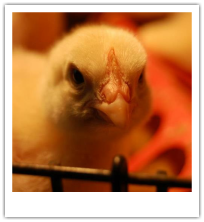 What Consumes You? At the classroom level, however, a vision begins here: How do we appreciate what we consume? How do we appreciate what consumes us? Shifting discourse from “eat” to “consume” empowers the metaphor, and broadens the umbrella of thought to encompass each of the categories (economics, politics, science, culture, social consciousness). For the middle school language arts classroom teachers who I will be addressing, the question is most likely going to arise: how does this tie in with our existing curriculum and assessment needs? But then, isn’t that a question each of us walked away with after the first Sustainability Institute? My initial plan before attending this weekend’s Institute was fairly one-dimensional: get teachers and their students writing about rural connections; give them some artifacts to help them access their senses, and provide some old journals/diaries to show “what writing looked like” from days passed. That would still make an excellent “English” presentation… But NOW…
With grounding in the concepts of sustainability, I’ll wrap materials around essential questions that will highlight that intersection between the “humanities” and the“science” of the Buy Local Movement and/or home production of foodstuffs. How this will manifest hasn’t crystallized yet, but it’s a goal :)
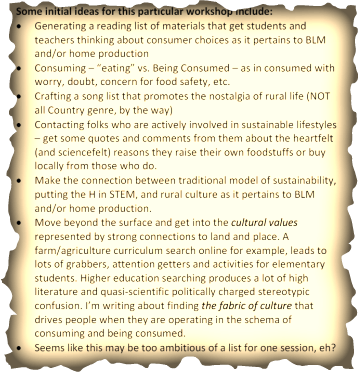 Which of these should be at the forefront of the arrangement? Why?
At the community college level, I run into a fantastic number of students whose parents (and sometimes they themselves) are enthusiastic consumers or producers of locally grown foodstuffs. Even those who do not partake are aware of its existence; most of either camp are not aware of it as anything other than an economic or radical choice. Most don’t seem to be aware of the power of the individual choices they make every day even when they’re making powerful choices! The story of the people, and their place, is an important part of our identity which is met regularly with a level of dismissiveness. It’s not clear how much of this is a product of our compartmentalized education (English in English class, science in science class, social studies… ) so some folks have developed this sense of “there’s no place for poetry on the farm,” or even, “there’s a place for poetry and a place for farming.” Why not explore the two together? Why not give voice to the stories of a place that impacts us all so deeply and intimately?
Somewhere along the line, it seems high art married literature and hard work married sustenance and the pairs split paths. Those roads may have diverged in a yellow wood, but it’s almost springtime, and it’s about time to craft a connecting path so they can find each other once again. My dream is to help everyday people access their place on the cultural spectrum that includes the Robert Frost, the Will Carleton (“The Farmer’s Poet”), the Donald Hall, the long line of revered nature writers, and do so in accessible ways. Perhaps the lens of sustainability can help people understand the significance, and move forward with it.
Middle school only? 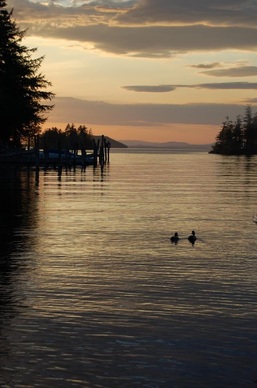 I think not. The ideas here can blossom into any level from middle school through post-graduate. The differentiation would come in level of readability, age-appropriate discouse and literature selections, and in how much agency to promote. Interdisciplinary activities are limitless across content areas and elective fields, and this speaks to the portable nature of educational plans, which seems to mirror the very nature of sustainability. Next steps would include to build this concept into whatever course I teach next at community college. That's likely a writing course, at this point, but we’ll see :) -Amanda Eason
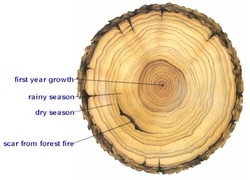 One item that came up today involved the question of why and how one generation reacts differently from the next generation to stressors (like how Las Madres reacted to the Disappeared Ones versus the orphan daughter astronomer). This made me think about the rings of a tree. If we consider each year of a culture’s development to be represented by a ring of growth in the tree, we can make some comparisons that help wrap our minds around sustainability and its function. A good year’s growth would be one in which all sustaining factors are met: environmental conditions are correct for optimal growth and minimal damage.
One year, an axe scars the outer skin of the tree; here is Pinochet’s terror. The tree weeps; it bleeds sap and begins the process of healing. Subsequent years’ growth in that area is focused on repairing the damage. Those scarred areas don’t transmit nutrient any longer, but the tree repurposed energy to move growth along regardless. If the scar is deep enough, this can take years to heal and the tree’s overall health will suffer.
Another year, on another part of the tree, damage from the strong winds of a hurricane weakens one side of the tree’s infrastructure; the tree responds by developing more root strength and greater toughness tissues to sustain the weight and balance of the tree. Taking a core sample from this tree in one vector may reveal decades of no damage; these are our privileged few. A tree old enough will have hidden scars underneath its layers. Anyone who splits and burns wood will tell you these are strong parts, tougher to split and usually burn better. It is these features of the tree’s growth and its reaction to pain and suffering that make the tree sustainable.
If we compare the tree's system to sustainability in education, then we would be an agent that undertakes the burden of belaying stress, pain, and suffering and buffering it so that the whole impact is spread throughout to alleviate scarring and move growth forward. We may not stop the scarring (and perhaps not directly address the pain, like the young woman raised by grandparents after her parents Disappeared did not immediately go looking for bones) but we all can help repurpose energy to heal and move culture forward, hopefully, and taller. - Amanda Eason
|





 RSS Feed
RSS Feed